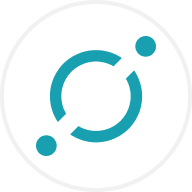
ZK
ZKsync price
$0.052080
-$0.00254
(-4.66%)
Price change for the last 24 hours

How are you feeling about ZK today?
Share your sentiments here by giving a thumbs up if you’re feeling bullish about the coin or a thumbs down if you’re feeling bearish.
Vote to view results
ZKsync market info
Market cap
Market cap is calculated by multiplying the circulating supply of a coin with its latest price.
Market cap = Circulating supply × Last price
Market cap = Circulating supply × Last price
Circulating supply
Total amount of a coin that is publicly available on the market.
Market cap ranking
A coin's ranking in terms of market cap value.
All-time high
Highest price a coin has reached in its trading history.
All-time low
Lowest price a coin has reached in its trading history.
Market cap
$191.17M
Circulating supply
3,675,000,000 ZK
17.50% of
21,000,000,000 ZK
Market cap ranking
126
Audits

Last audit: --
24h high
$0.054640
24h low
$0.051660
All-time high
$0.27290
-80.92% (-$0.22082)
Last updated: Dec 7, 2024
All-time low
$0.039720
+31.11% (+$0.012360)
Last updated: Apr 15, 2025
ZKsync Feed
The following content is sourced from .

Hardhat Chad
L2s suck no matter what the base layer is

Eric Wallzard
Thinking about the following:
Let’s imagine that we had OP_CAT and that it did indeed give us introspection, STARKs + state-carrying ability (to build rollups, validiums etc), or even other opcodes that solve it even more neatly (take your pick of OP_TXHASH, OP_CCV, OP_MERKLEBRANCHVERIFY, OP_STARK_VERIFY, OP_M31ADD, OP_M31SUB, OP_M31MUL, OP_M31INV, <insert 64-bit arithmetic opcodes here>)
What would the ideal L2 construction look like for Bitcoin?
What we don’t want to do: repeat the Ethereum playbook—200 competing teams building different L2s, poor interconnectivity/composability all competing for the same users, what *DO* we want to do?
Which lessons can we learn from Ethereum?
Keep in mind that we can’t (nor do we want to) do based rollups. The L1 is too slow for that, and we don’t want baselayer MEV of that nature.
Also keep in mind that we want:
- A high-TPS transaction system (Lightning without channels basically)
- Some will want more expressivity (for trustless stablecoin loans, AMM swaps, vaults, inheritance plans, leverage products)
Should these two types of systems exist on the same execution layer, or is it best to separate payments from applications with different sequencing queues (I tend to believe so) — maybe we want to go in a Celestia-ish direction of doing one zkVM L2 and all the other systems as L3s, separate queues but aggregation via the L2.
Doing real rollups for anything at scale is basically out of the question for the endgame vision given the low throughput of the L1 and the DA needs (and adding blobs seems highly unlikely) so we’d most likely be running some flavor of validiums + external DA-layer, zk-plasmas or client-side validation-based architectures like Miden.
Also, we should explore whether we want pure ZK-systems or hybrid proving (”optimistic ZK”, see Fuel for ref) to maximize throughput even further.
One way is to let the free market win and just see what happens, but that’s what Ethereum did. Even if we take the lessons in with us and teams try to coordinate around singular aggregation solutions from the getgo, there’s no guarantee at all that it will work. We also don’t have any ability to enshrine any particular execution layer via the L1.
Still, it is clear to me that STARKs present the best path for all of the following:
- Trust-minimized payments (without channels, routing or liquidity requirements)
- Expressivity (for those who want it)
- Privacy (full ZK-privacy VMs)
- Achieving all of the above without introducing any exotic cryptographic assumptions, trusted setups etc.
You may ask about finality because of the latency of the L1, but imo it can quite clearly be addressed to a satisfying degree with bonded sequencers for fast pre-confs.
So we have all the tools, what do we do to arrange the best possible outcome?
While BTC should obviously be the currency for all these systems (and pay for fees/gas), there’s the last (or perhaps first) question about how to achieve all of this without introducing an L2 token mostly controlled by a Foundation with too much control.
I think a payments-only system can work fine without a governance token (with just central sequencing + unilateral exits against censorship), but I doubt it for anything expressive.
While most Foundations/DAOs have decentralization as goals, putting that much power in the hands of a centralized org even in a bootstrapping phase seems suboptimal to me if we want some kind of collective approach from the getgo to mitigate fragmentation risks.
Would be great to hear what other people think from people with experience from other ecosystems like Ethereum, Celestia, Polygon, Cosmos and also curious how current L2 teams working on Bitcoin are thinking about these questions (e.g. Alpen, Chainway, Starkware).
Please feel free to chime in in the comments!
8.9K
14

Wei Dai
Not a Bitcoiner, but here's my 2 cents.
Bitcoin needs to focus on simplicity and do the following 3 things really well:
(1) Enable more people to hodl (self-custody) Bitcoin
(2) Enable any two self-custody wallets to transact directly with each other
(3) Provide access to defi with low counter-party risk
Supporting more execution (via rollups / validiums) is necessary to achieve (3).
(2) is what Ethereum got wrong--good luck paying someone on ZKsync era from Base.
So the question is, how to achieve (2) and (3) together?
Yes, I agree with Eric that base or native rollups are probably not feasible for Bitcoin since it's too ossified. This means that there probably won't be one canonical rollup that is "officially" supported and there will be many commercially competitive ones.
As a consequence of the many-chain future, the priority shall be figuring out the set of interop and interface standards, not debating the intricacies of which BitVM bridge/rollup is better than the other.
Two things at the minimum:
- Chain-agnostic address standard
- Deposit/withdraw interface standard for BitVM bridges/rollups
Ethereum rollup-centric roadmap went on for 5 years without these standards and the community is just working on that now. That's the most important lesson Bitcoin should learn from Ethereum.

Eric Wallzard
Thinking about the following:
Let’s imagine that we had OP_CAT and that it did indeed give us introspection, STARKs + state-carrying ability (to build rollups, validiums etc), or even other opcodes that solve it even more neatly (take your pick of OP_TXHASH, OP_CCV, OP_MERKLEBRANCHVERIFY, OP_STARK_VERIFY, OP_M31ADD, OP_M31SUB, OP_M31MUL, OP_M31INV, <insert 64-bit arithmetic opcodes here>)
What would the ideal L2 construction look like for Bitcoin?
What we don’t want to do: repeat the Ethereum playbook—200 competing teams building different L2s, poor interconnectivity/composability all competing for the same users, what *DO* we want to do?
Which lessons can we learn from Ethereum?
Keep in mind that we can’t (nor do we want to) do based rollups. The L1 is too slow for that, and we don’t want baselayer MEV of that nature.
Also keep in mind that we want:
- A high-TPS transaction system (Lightning without channels basically)
- Some will want more expressivity (for trustless stablecoin loans, AMM swaps, vaults, inheritance plans, leverage products)
Should these two types of systems exist on the same execution layer, or is it best to separate payments from applications with different sequencing queues (I tend to believe so) — maybe we want to go in a Celestia-ish direction of doing one zkVM L2 and all the other systems as L3s, separate queues but aggregation via the L2.
Doing real rollups for anything at scale is basically out of the question for the endgame vision given the low throughput of the L1 and the DA needs (and adding blobs seems highly unlikely) so we’d most likely be running some flavor of validiums + external DA-layer, zk-plasmas or client-side validation-based architectures like Miden.
Also, we should explore whether we want pure ZK-systems or hybrid proving (”optimistic ZK”, see Fuel for ref) to maximize throughput even further.
One way is to let the free market win and just see what happens, but that’s what Ethereum did. Even if we take the lessons in with us and teams try to coordinate around singular aggregation solutions from the getgo, there’s no guarantee at all that it will work. We also don’t have any ability to enshrine any particular execution layer via the L1.
Still, it is clear to me that STARKs present the best path for all of the following:
- Trust-minimized payments (without channels, routing or liquidity requirements)
- Expressivity (for those who want it)
- Privacy (full ZK-privacy VMs)
- Achieving all of the above without introducing any exotic cryptographic assumptions, trusted setups etc.
You may ask about finality because of the latency of the L1, but imo it can quite clearly be addressed to a satisfying degree with bonded sequencers for fast pre-confs.
So we have all the tools, what do we do to arrange the best possible outcome?
While BTC should obviously be the currency for all these systems (and pay for fees/gas), there’s the last (or perhaps first) question about how to achieve all of this without introducing an L2 token mostly controlled by a Foundation with too much control.
I think a payments-only system can work fine without a governance token (with just central sequencing + unilateral exits against censorship), but I doubt it for anything expressive.
While most Foundations/DAOs have decentralization as goals, putting that much power in the hands of a centralized org even in a bootstrapping phase seems suboptimal to me if we want some kind of collective approach from the getgo to mitigate fragmentation risks.
Would be great to hear what other people think from people with experience from other ecosystems like Ethereum, Celestia, Polygon, Cosmos and also curious how current L2 teams working on Bitcoin are thinking about these questions (e.g. Alpen, Chainway, Starkware).
Please feel free to chime in in the comments!
14.75K
14



Eric Wallzard
Thinking about the following:
Let’s imagine that we had OP_CAT and that it did indeed give us introspection, STARKs + state-carrying ability (to build rollups, validiums etc), or even other opcodes that solve it even more neatly (take your pick of OP_TXHASH, OP_CCV, OP_MERKLEBRANCHVERIFY, OP_STARK_VERIFY, OP_M31ADD, OP_M31SUB, OP_M31MUL, OP_M31INV, <insert 64-bit arithmetic opcodes here>)
What would the ideal L2 construction look like for Bitcoin?
What we don’t want to do: repeat the Ethereum playbook—200 competing teams building different L2s, poor interconnectivity/composability all competing for the same users, what *DO* we want to do?
Which lessons can we learn from Ethereum?
Keep in mind that we can’t (nor do we want to) do based rollups. The L1 is too slow for that, and we don’t want baselayer MEV of that nature.
Also keep in mind that we want:
- A high-TPS transaction system (Lightning without channels basically)
- Some will want more expressivity (for trustless stablecoin loans, AMM swaps, vaults, inheritance plans, leverage products)
Should these two types of systems exist on the same execution layer, or is it best to separate payments from applications with different sequencing queues (I tend to believe so) — maybe we want to go in a Celestia-ish direction of doing one zkVM L2 and all the other systems as L3s, separate queues but aggregation via the L2.
Doing real rollups for anything at scale is basically out of the question for the endgame vision given the low throughput of the L1 and the DA needs (and adding blobs seems highly unlikely) so we’d most likely be running some flavor of validiums + external DA-layer, zk-plasmas or client-side validation-based architectures like Miden.
Also, we should explore whether we want pure ZK-systems or hybrid proving (”optimistic ZK”, see Fuel for ref) to maximize throughput even further.
One way is to let the free market win and just see what happens, but that’s what Ethereum did. Even if we take the lessons in with us and teams try to coordinate around singular aggregation solutions from the getgo, there’s no guarantee at all that it will work. We also don’t have any ability to enshrine any particular execution layer via the L1.
Still, it is clear to me that STARKs present the best path for all of the following:
- Trust-minimized payments (without channels, routing or liquidity requirements)
- Expressivity (for those who want it)
- Privacy (full ZK-privacy VMs)
- Achieving all of the above without introducing any exotic cryptographic assumptions, trusted setups etc.
You may ask about finality because of the latency of the L1, but imo it can quite clearly be addressed to a satisfying degree with bonded sequencers for fast pre-confs.
So we have all the tools, what do we do to arrange the best possible outcome?
While BTC should obviously be the currency for all these systems (and pay for fees/gas), there’s the last (or perhaps first) question about how to achieve all of this without introducing an L2 token mostly controlled by a Foundation with too much control.
I think a payments-only system can work fine without a governance token (with just central sequencing + unilateral exits against censorship), but I doubt it for anything expressive.
While most Foundations/DAOs have decentralization as goals, putting that much power in the hands of a centralized org even in a bootstrapping phase seems suboptimal to me if we want some kind of collective approach from the getgo to mitigate fragmentation risks.
Would be great to hear what other people think from people with experience from other ecosystems like Ethereum, Celestia, Polygon, Cosmos and also curious how current L2 teams working on Bitcoin are thinking about these questions (e.g. Alpen, Chainway, Starkware).
Please feel free to chime in in the comments!
30.42K
98
ZKsync price performance in USD
The current price of ZKsync is $0.052080. Over the last 24 hours, ZKsync has decreased by -4.65%. It currently has a circulating supply of 3,675,000,000 ZK and a maximum supply of 21,000,000,000 ZK, giving it a fully diluted market cap of $191.17M. At present, the ZKsync coin holds the 126 position in market cap rankings. The ZKsync/USD price is updated in real-time.
Today
-$0.00254
-4.66%
7 days
-$0.00700
-11.85%
30 days
-$0.00717
-12.11%
3 months
-$0.06092
-53.92%
Popular ZKsync conversions
Last updated: 05/06/2025, 11:14
| 1 ZK to USD | $0.052040 |
| 1 ZK to PHP | ₱2.9052 |
| 1 ZK to EUR | €0.046087 |
| 1 ZK to IDR | Rp 857.05 |
| 1 ZK to GBP | £0.039212 |
| 1 ZK to CAD | $0.072015 |
| 1 ZK to AED | AED 0.19114 |
| 1 ZK to VND | ₫1,350.99 |
About ZKsync (ZK)
The rating provided is an aggregated rating collected by OKX from the sources provided and is for informational purpose only. OKX does not guarantee the quality or accuracy of the ratings. It is not intended to provide (i) investment advice or recommendation; (ii) an offer or solicitation to buy, sell or hold digital assets; or (iii) financial, accounting, legal or tax advice. Digital assets, including stablecoins and NFTs, involve a high degree of risk, can fluctuate greatly, and can even become worthless. The price and performance of the digital assets are not guaranteed and may change without notice. Your digital assets are not covered by insurance against potential losses. Historical returns are not indicative of future returns. OKX does not guarantee any return, repayment of principal or interest. OKX does not provide investment or asset recommendations. You should carefully consider whether trading or holding digital assets is suitable for you in light of your financial condition. Please consult your legal/ tax/ investment professional for questions about your specific circumstances.
Show more
- Official website
- Github
- Block explorer
About third-party websites
About third-party websites
By using the third-party website ("TPW"), you accept that any use of the TPW will be subject to and governed by the terms of the TPW. Unless expressly stated in writing, OKX and its affiliates ("OKX") are not in any way associated with the owner or operator of the TPW. You agree that OKX is not responsible or liable for any loss, damage and any other consequences arising from your use of the TPW. Please be aware that using a TPW may result in a loss or diminution of your assets.
Latest news about ZKsync (ZK)

ZKSync Hacker Returns $5M in Stolen Tokens After Accepting 10% Bounty
The hacker cooperated with the ZKsync team and returned the funds within the “safe harbor” deadline while taking a 10% bounty..
Apr 24, 2025|CoinDesk

Matter Labs, ZKsync Developer, Sued for Alleged Intellectual Property Theft
Defunct blockchain firm BANKEX said two ex-employees stole its technology to build ZKsync, but a spokesperson at Matter Labs called the allegation "baseless."
Apr 22, 2025|CoinDesk

ZKsync’s ZK token drops over 15% after airdrop contract exploit, $5 million stolen
ZKsync’s ZK token plunged over 15% today, falling from $0.047 to under $0.04 within an...
Apr 15, 2025|Crypto Briefing
Learn more about ZKsync (ZK)

ZKsync Airdrop Breach: Impact and Response
Overview of the ZKsync Breach In April 2025, ZKsync experienced a security breach involving a compromised administrator account linked to its airdrop distribution contracts. This incident resulted in the unauthorized minting and transfer of approximately $5 million worth of unclaimed ZK tokens.
Apr 17, 2025|OKX

zkSync Era deep dive: A solution for Ethereum's scalability conundrum?
Layer 2 solutions have emerged as a response to the scalability limitations of blockchain networks, particularly the Ethereum network. Layer 2 refers to a secondary framework built on the main blockchain that addresses scalability issues by processing transactions off-chain while maintaining the underlying blockchain's security and decentralization benefits.
Apr 25, 2024|OKX
ZKsync FAQ
How much is 1 ZKsync worth today?
Currently, one ZKsync is worth $0.052080. For answers and insight into ZKsync's price action, you're in the right place. Explore the latest ZKsync charts and trade responsibly with OKX.
What is cryptocurrency?
Cryptocurrencies, such as ZKsync, are digital assets that operate on a public ledger called blockchains. Learn more about coins and tokens offered on OKX and their different attributes, which includes live prices and real-time charts.
When was cryptocurrency invented?
Thanks to the 2008 financial crisis, interest in decentralized finance boomed. Bitcoin offered a novel solution by being a secure digital asset on a decentralized network. Since then, many other tokens such as ZKsync have been created as well.
Will the price of ZKsync go up today?
Check out our ZKsync price prediction page to forecast future prices and determine your price targets.
Monitor crypto prices on an exchange
Watch this video to learn about what happens when you move your money to a crypto exchange.
Disclaimer
The social content on this page ("Content"), including but not limited to tweets and statistics provided by LunarCrush, is sourced from third parties and provided "as is" for informational purposes only. OKX does not guarantee the quality or accuracy of the Content, and the Content does not represent the views of OKX. It is not intended to provide (i) investment advice or recommendation; (ii) an offer or solicitation to buy, sell or hold digital assets; or (iii) financial, accounting, legal or tax advice. Digital assets, including stablecoins and NFTs, involve a high degree of risk, can fluctuate greatly. The price and performance of the digital assets are not guaranteed and may change without notice.
OKX does not provide investment or asset recommendations. You should carefully consider whether trading or holding digital assets is suitable for you in light of your financial condition. Please consult your legal/tax/investment professional for questions about your specific circumstances. For further details, please refer to our Terms of Use and Risk Warning. By using the third-party website ("TPW"), you accept that any use of the TPW will be subject to and governed by the terms of the TPW. Unless expressly stated in writing, OKX and its affiliates (“OKX”) are not in any way associated with the owner or operator of the TPW. You agree that OKX is not responsible or liable for any loss, damage and any other consequences arising from your use of the TPW. Please be aware that using a TPW may result in a loss or diminution of your assets. Product may not be available in all jurisdictions.
OKX does not provide investment or asset recommendations. You should carefully consider whether trading or holding digital assets is suitable for you in light of your financial condition. Please consult your legal/tax/investment professional for questions about your specific circumstances. For further details, please refer to our Terms of Use and Risk Warning. By using the third-party website ("TPW"), you accept that any use of the TPW will be subject to and governed by the terms of the TPW. Unless expressly stated in writing, OKX and its affiliates (“OKX”) are not in any way associated with the owner or operator of the TPW. You agree that OKX is not responsible or liable for any loss, damage and any other consequences arising from your use of the TPW. Please be aware that using a TPW may result in a loss or diminution of your assets. Product may not be available in all jurisdictions.




































Socials